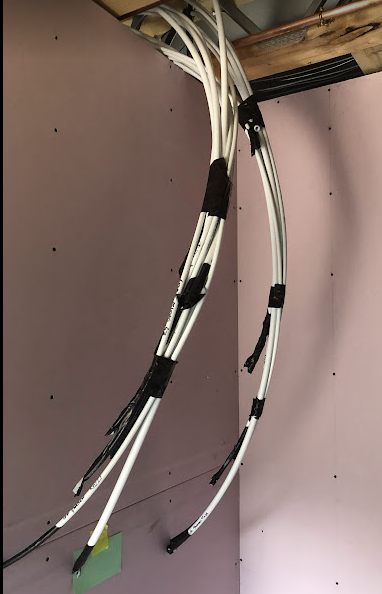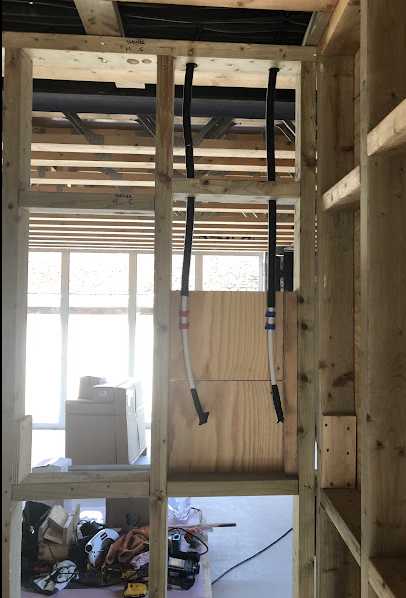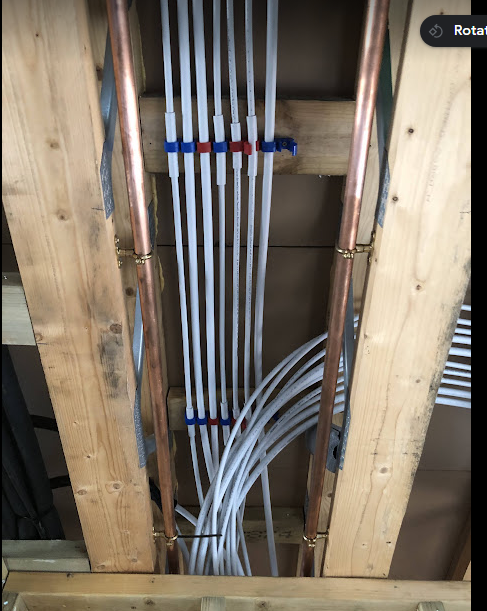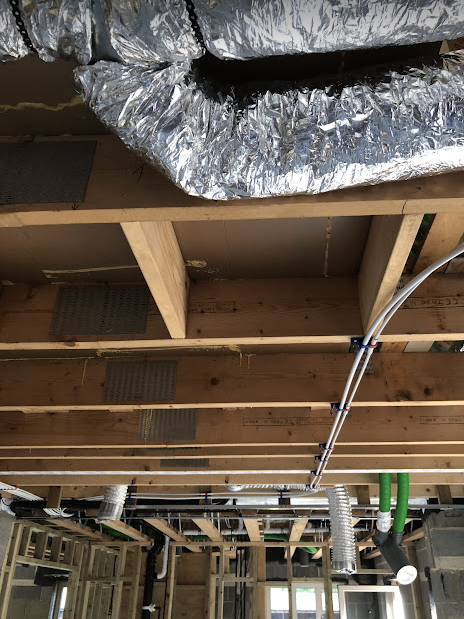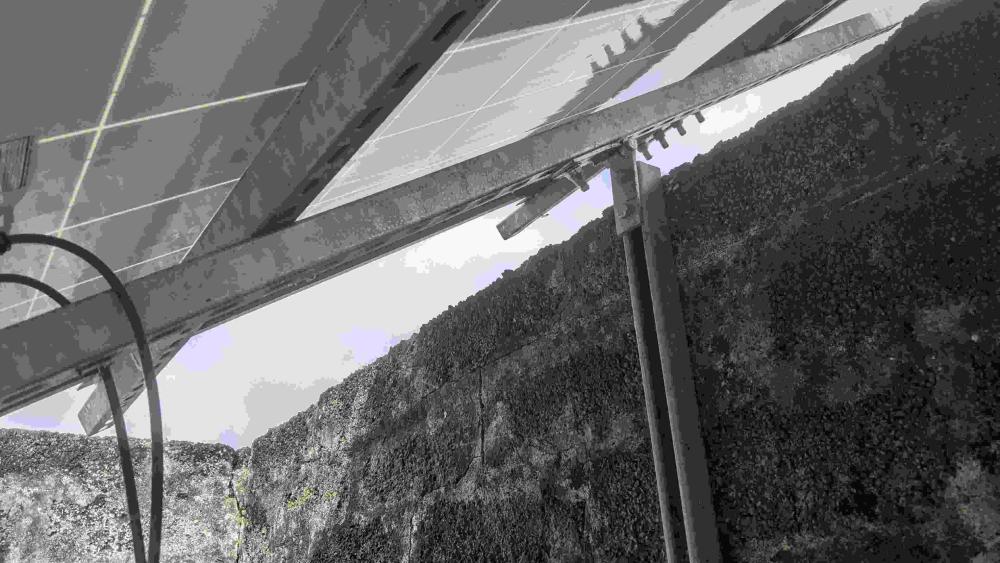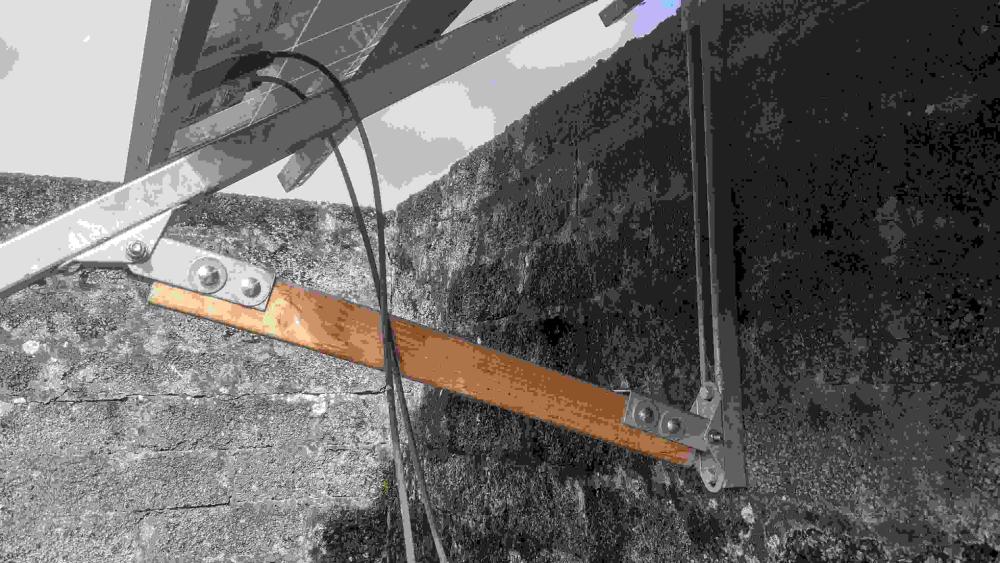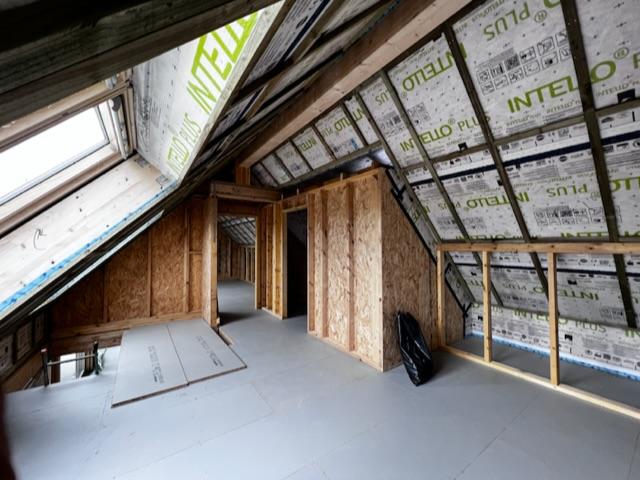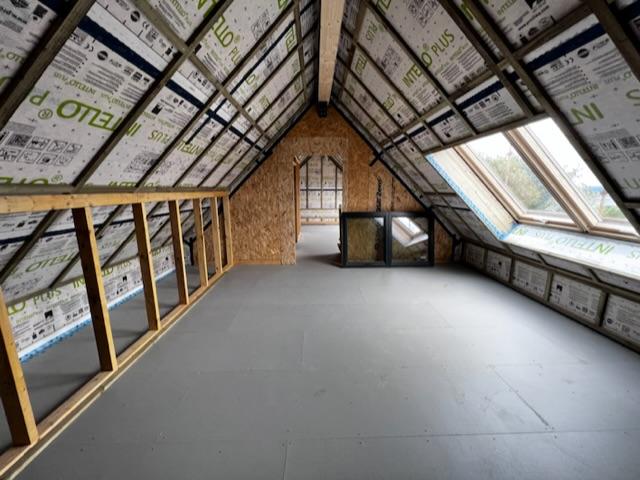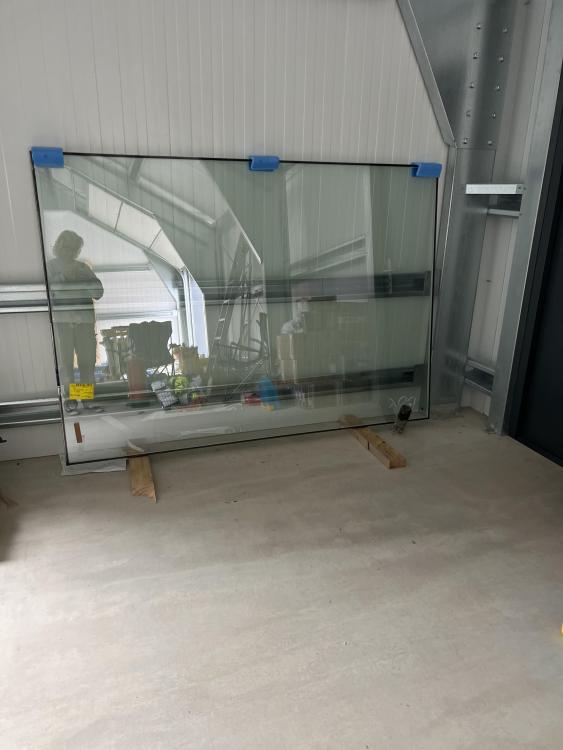Leaderboard
Popular Content
Showing content with the highest reputation on 07/03/23 in all areas
-
3 points
-
3 points
-
There has been a lot in the press recently about this, and down here we have seen record breaking sea surface temperatures, and nationally we have probably had the warmest June ever. Now we (scientists) know that the underlying problem is the increase in atmospheric CO2e gases and land use change. So rather than bang the same drum about reducing energy usage, insulate homes, population control (though that is more about prejudice than anything else), blaming other countries etc, let us assume that we have missed the boat on mitigation, and are now into resilience. How can the UK make itself resilient to climate change and weather variation. So to kick the ball off here is the start of my list about what we have to look at: Agriculture Flooding Drought Storms Travel Energy Production Education Industry/Commerce I am going to go against my usual optimistic outlook and assume that within a decade the above areas will become a real problem. So how can the normal home owner help in this global problem?2 points
-
Air-to-air multi-split and a direct UVC - simple and easy. Much better than an a2w setup in my opinion. This has the potential for cheap, low carbon heat, with very easy on/off controls, and allows full zoning as required by the regs.2 points
-
Moving on to dealing with climate change is a positive step. For too long we have been concerned with stopping climate change. Stopping climate change depends on that climate change being man made, which we are continuously told it is. But WHAT IF it is not, we stop all the CO2 emissions we all live our lives carbon neutral and the bloody climate still changes because that is what the planet has been doing for millions of years and is not about to stop changing just because we say so? I think the biggest threat, is sea level. It won't bother me at 105 metres above sea level, but we have plenty of large cities on the coast and estuaries. What will they be like if the sea rises 1 metre? 2 metres? 5 metres? What planning are we doing to mitigate that? Encircle them with dykes and live below sea level like the Dutch? Abandon them and move everyone to higher ground? But as this change will be global, a lot of land that is already marginal for human occupation will become impossible, so mass migration will be a global issue to deal with. The (mostly economic) illegal migration we have now is nothing compared to the probable migration that is to come. Like population control, you hear no talk from those that should be planning this, what they are actually planning. That is worrying.2 points
-
Housing is a big starting point, it has to include things like solar, rain water harvesting (and enforced use of, for hose pipes, toilets etc) and attenuation. We generally already eat pretty local, mainly because it's as cheap as the supermarkets these days - we can get a fruit/veg box delivered every week from a local farm for roughly the same price as it would cost to buy the same products from Aldi, yet it's fresher, tastier and lasts longer. The problem is, people want strawberries during winter - everyone needs to get used to eating seasonally again. Cereal/grain is probably the only thing we eat regularly now which I suspect is imported.2 points
-
Whilst population control is a touchy subject it has to be addressed, in nature boom and bust (in population terms) is common. waste! Production of and marketing of waste is big business, everyone (majority) have to have the latest gadgets, tech, phones, excercise ‘thingy’ etc. good design of housing and buildings that don’t need ever increasing amounts of AC to keep them habitable, as kids we never saw AC even in 1976 when it was very warm but now people will die if they don’t have AC at work or countless fans at home. basically, we have all been taught to be soft and we need to toughen up and as above, leave a little footprint as possible2 points
-
If you need any additional noggins in place for the brackets get it in before the pipework is glued.2 points
-
Pretty good, most people find it under estimates a bit, maybe 3 to 5%. Some of that will be down to quality of modules (the real term for panels). This is because, to offer a guaranteed output in a decade of say 80% performance, the manufactures actually supply higher powered modules, but marked up as lower powered ones i.e. 320W modules but marked as 305W.1 point
-
Read somewhere that in the 60 or 70s when central heating first started the house target temp was something like 16 degrees, now we get people who want and need to have 23, or they will die, then complain about big bills.1 point
-
Ohms Law. Get the voltage to 3.3V on the data wire. https://raspberrypi.stackexchange.com/questions/41234/max-length-of-wire-w-3-3v-or-other-issue1 point
-
The official ones tend to be better. Sharper points and fins. Its worth having a few quality heads too. Boarders go through a lot so it must be important, and that's why you can buy a big pack of them. 25 dewalts. How flash is that?1 point
-
first bathroom shower and basin waste in and tested with no leaks. fall of 22mm/m in the end which is within the max/min @Nickfromwales mentioned above. very happy with it all. got some drop ceilings and plaster boarding to do this week then I'm back on the plumbing at the weekend.1 point
-
make sure you have the plastic insert inside the MDPE pipe before tighting.1 point
-
I could not operate our 3.6kW PV effectively without a battery as we gather energy during the day and then use it overnight. With a 9.5kWh battery I'm still exporting energy despite having A2A cooling and an EV (which has been running on sunshine for the last couple of months).1 point
-
No point in the membrane. It works OK as a separation layer, like if you are on clay. Flint and chalk will be good as long as the chalk is not too putty-like.1 point
-
Surely if you are on clay, that is the issue. You have effectively dug a hole in a watertight sub soil, and put some better soil in, but it does not drain, just as if you had put your good soil in a bucket.1 point
-
Wall 'strength' is a function of the normalised compressive strength (how to account for the different height / thickness - a 215x100 upright is approx twice the strength than when laid flat), mortar strength and bond pattern. A simple way to think of this effect is that a wall with blocks laid flat is weaker because mortar makes up more of the wall than when the blocks are upright. (Mortar being between 4 - 6MPa typically). This is part of the reason why blockwork of 3.6MPa strength have as much load bearing capacity as clay bricks which are 20 - 50MPa. Not sure I buy it as a significant problem in this situation but that is the technical reasoning.1 point
-
You need to shop around to not pay stupid prices. I rang around local electrical trade places. Prices varied between £70 for 3m plus vat, collect only. I used Medlocks and paid £40 for 6m lengths delivered. All quotes were for 41mm square undrilled.1 point
-
Direct channel's courier lost my order and DC refused to refund until the goods showed up at my address or theirs's, so had to go to credit card company for refund. I will never use them again, what if I had used another payment method. The amount was £450. So I now use https://www.superlecdirect.com/ and get their own driver to deliver if it includes 6M length for £5 carriage for orders over £50.1 point
-
https://directchannel.uk.com/index.php?route=product/product&product_id=35071 point
-
If you are running weather compensation, which all ASHP installs should be, then the room by room temperature control will be for overheat protection, rather than direct room temperature control. So there is zero requirements for the room temperature control to call for heat. Heating room more or less than others is simply a matter of balancing. So by default why would anyone require a buffer?1 point
-
1 point
-
(reviving old post but this seems most focused on the topic) I came across this source that agrees: a daisy chain (linear bus) with short stubs (<3m) to each device is the best topology, and star network the least favourable. https://www.analog.com/en/technical-articles/guidelines-for-reliable-long-line-1wire-networks.html Also mentions the possibility of an active pullup rather than the passive 4k7 pull up resistor, which can increase the possible network size further.1 point
-
I'm probably star pupil here, but i'm not so sure the majority would be willing to change their lifestyles to suit. I do the following: Eat responsibly and locally, and have zero food waste Travel within the country and only when necessary (this is partly because i'm just a boring bugger, and partly because driving results in days of pain for me, courtesy of fibromyalgia) Be careful with water usage, only using just what you need, and harvesting as much rainwater as possible to cover dry periods Buy just the things you need, and reduce the want list to virtually zero. Repair when possible instead of replacing. I have both Solar and Battery, which allows me to be self sufficient for a large proportion of the year (around 9 months), during which time I export far more than i use and store to the grid Compared with everyone I know, I go far and beyond what they do. My motto is to leave no footprint, or as little footprint as possible (which was oddly something we were taught about in primary school for when you are in the countryside), and leave the bit of the world i have control over in a better state than i found it. As for your list I would probably add security, depending on how bad things get, societal breakdown is a possibility, and security will also need increasing for the whole supply chain.1 point
-
Unlike our planners, our local CIL people are very easy to contact and have a practical discussion with. But no time limit to my knowledge, so anytime between getting planning permission and starting to build.1 point
-
1 point
-
1 point
-
It's horses for courses, simple as that. Private clientele who know zero about construction would be forced to use a PM. Not all PM's are any good. That cost is a set % of the gross build (project total) cost and can be utterly unfair and disproportionate, and can also be a 'risk'. That can be a 5 to 6-figure sum. With a company which provides a turnkey service (foundation, structure, insulation, airtightness, B-Regs, S.E. etc) there is an inbuilt opportunity, should you have chosen as well as is practicable, to save a huge chunk of the PM fees that would otherwise reside in your lap, be your responsibility, and would be utterly uninsurable against (most architects and PM's have a long list of exclusions and caveats stitched into their contracts to limit their liabilities) so the risk doesn't go away even if you It's down to trust, getting a "feel" for the customers or companies (the shoe goes onto either foot) and then you decide which is the better of the "2 evils". MBC is like a family run business, and they don't stray from what they excel at doing. They have a 'get in, get done, finish, move onto the next one' ethos, and I for one hold them in very high regard. Would I trust them with £100k of my own money? Yes. Would I trust them with the same sum of money if that relied on them having successfully imported a finished product from abroad to then pass on to me? No. The reason is, trust wouldn't be relevant, as there would be the additional weak link, a completely unknown 3rd party risk attached, a-la the Isotex debacle; a set of circumstances which would then be something that changes things way beyond my comfort zone. These are my own thoughts, and opinions, and not advice. But they do come from over 8 years of familiarity.1 point
-
The market seems to judge what they do as fair. As @Nickfromwales says they have plenty of work. Ultimately this is one of the things that made us choose the builder we did, trustworthiness. Taking a chance with such a large sum of money needs to be risk appraised and the benefits ultimately couldn't outweighs the risk of going with a builder with more passive experience but whom we were less sure about giving our money to. Who knows what would have happened in hindsight. Cellulose fill stick build and police the airtightness yourself with a DIY blowerdoor test. It'll be more than fine and cost less to boot I reckon.1 point
-
1 point
-
1 point
-
1 point
-
This is only if you're heating the house up from freezing to target temperature. In a PH this rarely (virtually never) happens. Once at target temperature, the ASHP is not "Heating" the concrete of the FF, or any of the fabric that is already within the thermal envelope. That's already at temperature. The ONLY job of the heating system (ASHP+UFH) is to replace heat energy that is lost out through the thermal envelope. In this respect, the concrete first floor is as much your friend as your enemy, as it is a big fat thermal store (so-called thermal mass) that slows down the rate of loss as proportion of energy in building when e.g. doors or windows are opened briefly. [analogy: if your bucket has a hole yay big in it, leaking 1L/min, you need to top up the bucket at 1L/min to maintain its level. The volume of the bucket is entirely irrelevant, unless you're silly enough to let the bucket empty and then need to heat it from nothing] Yes, without the FF, the GF UFH will have to do all this work. Except it won't, as you already mentioned here and elsewhere you have several kW electrical appliances doing most the work (hint: relocate some of them upstairs /hint), and then there's those FCUs available to help too. Anyway point #1 is unassailable, and it's in essence the reason I'd always suggest putting UFH in the GF even if PHPP says it's not needed, so if that's the decider on its own, the rest of this conversation is entirely academic 🙂1 point
-
I have mine wall mounted with a vertical channel every 2 panels with a hinge mount to the 6 panel frame. I have 2 sets of wooden beams for winter and summer settings, less than a hour to change each set of frames for 6 panels from one season angle to another. The hinges are at the mid point with equal weight above and below so as long as there is no wind a set of 6 panels will pivot using one hand.1 point
-
You could find an absolute mess behind that canopy and never get it to look ok. If you want to get light in can you do anything at roof level, say by way of some kind of light well, glazing panel?1 point
-
We didn't have any water on site when our pipes were laid, so we didn't bother pressurising them. It didn't cause any problems.1 point
-
You need to look at the pressure drop curves for your pump at your flow rates and have a sensible margin. Too low and the pump starts to sound noisy. I might have had a memory mindfart: ours might be at 1½ bar, I will have look the next time I am sitting on the can in the downstairs loo.1 point
-
Mike, we didn't even bother pressure testing ours until we commissioned the system , but that's because we used an MBC in-slab UFH so the slab team laid the UFH pipework straight from the drum and the concrete went down a day later. I filled the system and left it for a day to get into thermal equilibrium and cranked it up to 6 bar for a couple of hours, with just the manifolds and no expansion, just to double check for leaks, so even a few cm³ of loss would have collapsed the pressure. We have manual top-up from the rising main after the DCV through a double valve system to the expansion vessel if and when needed, and set it up to run at 1 bar. 9 months later and it's still at 1 bar. Though as Peter says some +/- around this because of the varying expansion of water in the system as the temperature varies. IMO, you only need to run the UFH at whatever pressure needed to prevent cavitation for your flow rates. I can't see any advantage in running at a high pressure than needed.1 point
-
+1. Prime the concrete first with 50/50 PVA and water and absolutely saturate it. Do NOT let the builder just pour it straight on. The slab will suck it dry before it's levelled out properly, and make 1m% sure they use 2-part leveller NOT the water mix one.1 point
-
How are you filling the loops ..?? The correct way is to put the hose onto the filler connection, close all the loop valves and the drain valve and then turn the hose on. That will show you any leaks in the manifold. Open the manifold drain half way and then open the first loop full bore. and let the water run - it will spit and bubble but let it run until it's pretty clear of air. Close the valve and move to the next one, again running to a hose and letting it run clear. It can take 2-3 minutes per loop to get the air out of each loop. Once you've got each loop clear then open them all half a turn and run it for another 2-3 minutes before closing the drain - you will watch the pressure rise in the manifold, take it to 3-4 bar then close the hose connection. And now wait ...... At 3 bar any leak in a pipe will be easy to see. You may find the pressure valve connection on the manifold leaks slightly (mine did) so just watch for a weep there. Mines been sat at 1 bar for 4 months now and tbh it's never moved. Next time it gets the pressure released will be for the pump and buffer to be fitted so I'm not going to get too worried about the water in it not having antifreeze or inhibitor in it - I've calculated the buffer and loop capacity and will just make the concentration up based on that and wait for it to naturally mix which will only take a few days.1 point
-
I didn't even bother to fill our UFH before the pour, as we had no water on site at the time and it seemed too much hassle to do. All went well, and there were no problems with any of the three loops. I have a feeling that MBC don't usually fill UFH loops before pouring slabs either; others may be able to comment on whether this was true for their slab pour. As for getting air out, then I found it did take a fair time for all the air to come out of all three loops. I filled the system and ran the pump at full speed, with the auto-bleed valve open, and it took a couple of hours for all the air to find its way out, IIRC.1 point
-
It’s funny how things work out in the end. There are quite a few things that have gone wrong with our build I’ve not mentioned. I spotted some serious errors prompting me to engage a structural engineer professionally (from here, thank heavens for BH) who highlighted a great many other issues and wrote me an excellent report. I am quite confident HH and their sub-contractor would have tried to hide the main problem had I not spotted it and the other issues were only highlighted because of the diligence of the SE I hired. Happy to mention who it is if he’s happy for me to. Basically the house was nothing like how the HH structural engineers designed it to be resulting in a great deal of remediation work which subsequently caused us other issues in detailing. We got through that then I noticed the ceiling heights were wrong in both parts of the house for different reasons. In the porch it was because they used the wrong depth of joists and in the main house it was because they had incorrectly measured for the steels. The porch was easier to address as we had space to move the ceiling header up and maintain the U value. The main house has been harder and the only practical option was to reduce the floor insulation build up from 210mm to 185mm throughout and reduce the screed depth to 53mm. We also removed the 45mm wall plate to drop the windows onto the foundation and added back in a 10mm insulated cement board. All in all we lost 3cm of ceiling height in the porch and 6cm in the main house. We can get away with it in the main house because it’s open plan into a 5m vaulted ceiling and all the windows are full height. The porch was also fabricated incorrectly in that it’s 100mm too high where it joins the main house which has changed the look of the house. If also made the gutter much harder to fit. The upside is we’ve gained a lot more height upstairs as the room in roof tends to mean lower ceilings. It has also meant we’ve changed the layout a bit. We’re exposing the ridge beam in the dressing room as a constant reminder that at one point there was a small chance the roof was going to have to come off! It has been quite the trial and very very stressful. We are weeks behind. It’s cost an extra £10k. I had cancel every follow on trade then beg to get them back and pay them up front. I’ve had to deal with HH and their sub-contractors negligence, incompetence, general lack of care and constant bullshit. Plus I now need to recover our costs and compensation. I was going to write a much longer post detailing the specific issues. I will if there’s interest. The main point of this post is to record that I can’t recommend Heb Homes or the sub-contractor they use. HH definitely have issues with how they run their business and their sub-contractor is just a bullshit artist. I’ve had to bite my tongue on so many occasions as I just wanted to get the job done and for them to leave and never return. Their houses are nice and well laid out and we are happy with it in that regard and it will be beautiful when we’re done. But that will be because of us and the excellent follow trades we’ve hired. Not because of HH and their sub-contractor.0 points
-
0 points
-
0 points
-
Can you just run a normal, cheap hosepipe around the garden, block the end and then punch holes in it where you want water to come out. I found a small holes in my pipe was brilliant at water my indoor plants when I need to water my front garden (tap at back of house). It also washed the furniture, walls, electrical sockets....0 points



